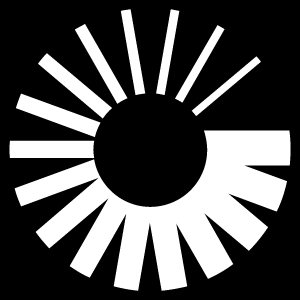RTX and Northrop Grumman conduct successful rocket motor tests for U.S. Army's Next-Generation Short-Range Interceptor
- Successful completion of four critical tests for the NGSRI program
- HLG technology provides superior performance with longer burn time and more energy output
- Rapid development from concept to first flight in less than 6 months
- Versatile launch capabilities from multiple platforms (tripod, vehicle, shoulder)
- Leverages established manufacturing infrastructure and 60 years of experience
- None.
Insights
RTX and Northrop Grumman achieve significant milestone with successful rocket motor tests, advancing next-gen missile defense capabilities.
The successful testing of Highly Loaded Grain (HLG) solid rocket motors for the U.S. Army's Next-Generation Short-Range Interceptor represents a significant technical milestone for both RTX and Northrop Grumman. The four successful tests—three static firings in various environments plus a ballistic flight demonstration—validate the HLG technology's capability to provide longer burn time and higher energy output than conventional solid rocket motors, directly translating to extended range capabilities.
What stands out is the remarkable development velocity. The teams transitioned from proof of concept to first flight in less than six months—an extraordinarily compressed timeline in defense development cycles. This acceleration suggests exceptional R&D efficiency and effective collaboration between the two defense giants.
The NGSRI's multi-platform versatility (tripod, vehicle, or shoulder-launched) significantly enhances battlefield flexibility compared to legacy systems. This adaptability, combined with the improved performance envelope, represents a substantial capability upgrade for U.S. ground forces.
RTX's implementation of modular design architecture and automated manufacturing techniques has clearly enabled the rapid development pace. The company's strategic leveraging of 60+ years of air defense experience alongside Northrop Grumman's propulsion expertise creates a powerful technological partnership.
With additional flight tests planned in the coming months, this program appears to be maintaining momentum toward potential production. The successful demonstration of this advanced propulsion technology reduces technical risk and increases confidence in the program's viability.
Raytheon advances NGSRI development with continued testing
The Next-Generation Short-Range Interceptor is the
In the latest round of testing, the team completed three static firings in different environments, followed by a successful ballistic flight demonstration. Over the coming months, additional flight tests are planned.
"These tests demonstrate our ability to rapidly develop this transformational air defense capability, which can defeat a variety of airborne threats at far greater ranges than legacy systems," said Tom Laliberty, president of Land and Air Defense Systems at Raytheon. "Alongside Northrop Grumman, Raytheon is delivering cutting-edge technology to protect our warfighters."
Raytheon is leveraging collaborative research at the Northrop Grumman Allegany Ballistics Laboratory in West Virginia to rapidly develop the new extended-range motor design, transitioning from proof of concept to first flight in a record time of less than six months.
"Northrop Grumman continues to push the boundaries on next-generation propulsion technology, and we're excited to work with Raytheon to bring this advanced solution for warfighters at record pace," said Frank DeMauro, vice president and general manager, Weapon Systems, Northrop Grumman. "Developed and demonstrated in five months, this innovative HLG motor provides increased speed, range, effectiveness and mission flexibility in a very small package."
Raytheon's NGSRI design leverages more than 60 years of air defense experience to provide the world's most advanced shoulder-launched air defense missile for
About Raytheon
Raytheon, an RTX business, is a leading provider of defense solutions to help the
About RTX
RTX is the world's largest aerospace and defense company. With more than 185,000 global employees, we push the limits of technology and science to redefine how we connect and protect our world. Through industry-leading businesses – Collins Aerospace, Pratt & Whitney and Raytheon – we are advancing aviation, engineering integrated defense systems for operational success, and developing next-generation technology solutions and manufacturing to help global customers address their most critical challenges. The company, with 2024 sales of more than
For questions or to schedule an interview, please contact corporatepr@rtx.com.
About Northrop Grumman
Northrop Grumman is a leading global aerospace and defense technology company. Our pioneering solutions equip our customers with the capabilities they need to connect and protect the world and push the boundaries of human exploration across the universe. Driven by a shared purpose to solve our customers' toughest problems, our employees define possible every day.
![]() View original content:https://www.prnewswire.com/news-releases/rtx-and-northrop-grumman-conduct-successful-rocket-motor-tests-for-us-armys-next-generation-short-range-interceptor-302472990.html
View original content:https://www.prnewswire.com/news-releases/rtx-and-northrop-grumman-conduct-successful-rocket-motor-tests-for-us-armys-next-generation-short-range-interceptor-302472990.html
SOURCE RTX







